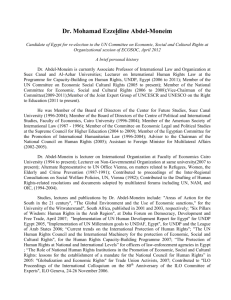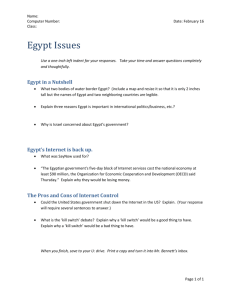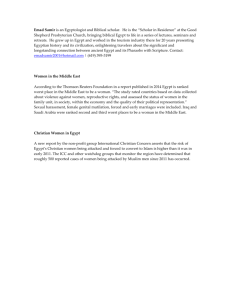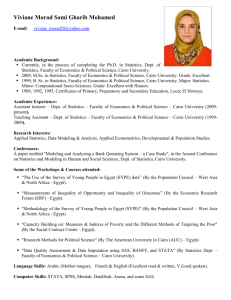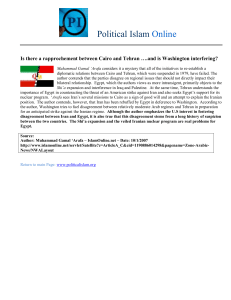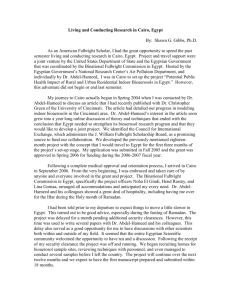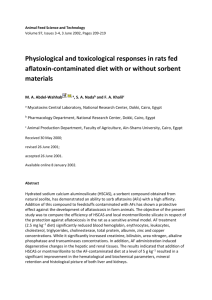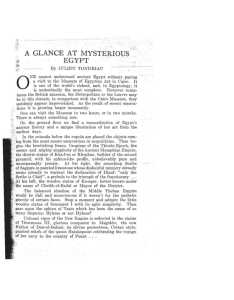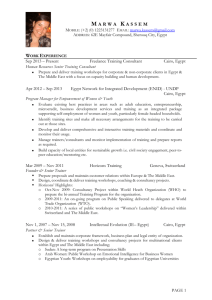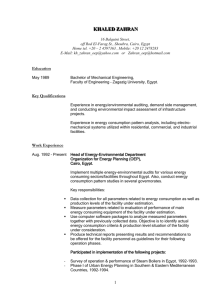Abstract VARIABILITY OF SUMMER TEMPERATURE OVER EGYPT
advertisement
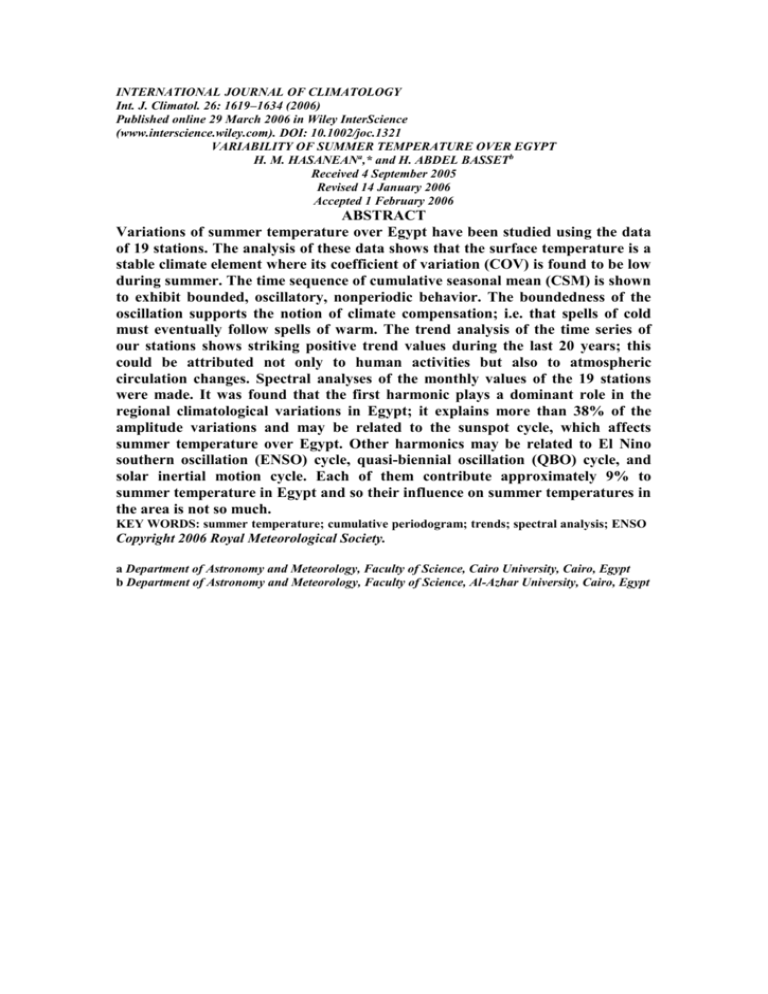
INTERNATIONAL JOURNAL OF CLIMATOLOGY Int. J. Climatol. 26: 1619–1634 (2006) Published online 29 March 2006 in Wiley InterScience (www.interscience.wiley.com). DOI: 10.1002/joc.1321 VARIABILITY OF SUMMER TEMPERATURE OVER EGYPT H. M. HASANEANa,* and H. ABDEL BASSETb Received 4 September 2005 Revised 14 January 2006 Accepted 1 February 2006 ABSTRACT Variations of summer temperature over Egypt have been studied using the data of 19 stations. The analysis of these data shows that the surface temperature is a stable climate element where its coefficient of variation (COV) is found to be low during summer. The time sequence of cumulative seasonal mean (CSM) is shown to exhibit bounded, oscillatory, nonperiodic behavior. The boundedness of the oscillation supports the notion of climate compensation; i.e. that spells of cold must eventually follow spells of warm. The trend analysis of the time series of our stations shows striking positive trend values during the last 20 years; this could be attributed not only to human activities but also to atmospheric circulation changes. Spectral analyses of the monthly values of the 19 stations were made. It was found that the first harmonic plays a dominant role in the regional climatological variations in Egypt; it explains more than 38% of the amplitude variations and may be related to the sunspot cycle, which affects summer temperature over Egypt. Other harmonics may be related to El Nino southern oscillation (ENSO) cycle, quasi-biennial oscillation (QBO) cycle, and solar inertial motion cycle. Each of them contribute approximately 9% to summer temperature in Egypt and so their influence on summer temperatures in the area is not so much. KEY WORDS: summer temperature; cumulative periodogram; trends; spectral analysis; ENSO Copyright 2006 Royal Meteorological Society. a Department of Astronomy and Meteorology, Faculty of Science, Cairo University, Cairo, Egypt b Department of Astronomy and Meteorology, Faculty of Science, Al-Azhar University, Cairo, Egypt



